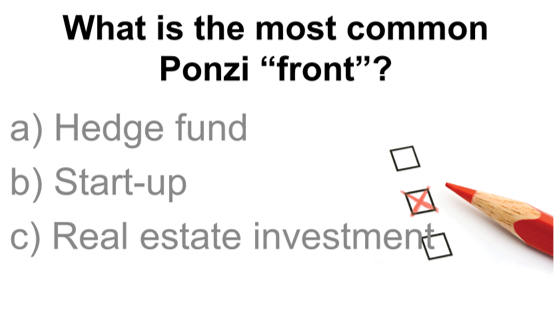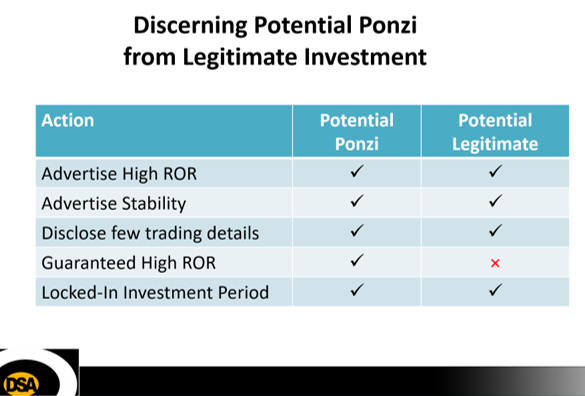This month the new SAR form is to be rolled out by FinCEN. A mere 10 years after the collapse of the largest Ponzi scheme in history, financial institutions will now be able to report suspected Ponzi schemes with a dedicated Fraud typology checkbox.
So what Red Flags should AML staff at financial institutions be on the look-out for regarding Ponzi schemes?
KYC
Traditional Ponzi schemes (excluding the recent flurry of Initial Coin Offering “ICO” schemes) tend to use a few tried and true “fronts”. See if you can guess the most common “front” that Ponzi schemes use.

A study found that “hedge fund” was the most common cover story used by Ponzi schemes, accounting for 14% of schemes. Coming in second was “real estate” and third was “promissory notes”.
Real vs. Fake Investment/Ponzi Red Flags
Discerning legitimate investments from Ponzi schemes may actually be more difficult than one would assume given that they may share some characteristics.

Account Opening Red Flags
Financial institutions should be aware of the following account opening Red Flags that often are associated with Ponzi schemes:

Our next post will identify Organizational and Transactional Red Flags often found in Ponzi schemes.
If you’d like to read more about Ponzi schemes check out this Business Journal article where I discuss how rising markets mask Ponzi schemes and how EB-5 immigration ponzi schemes create a disincentive for victims to report the fraud to law enforcement.
You may also like other DSA Ponzi-related blog posts:
Would you spend 21 days in prison for $1 million dollars?



